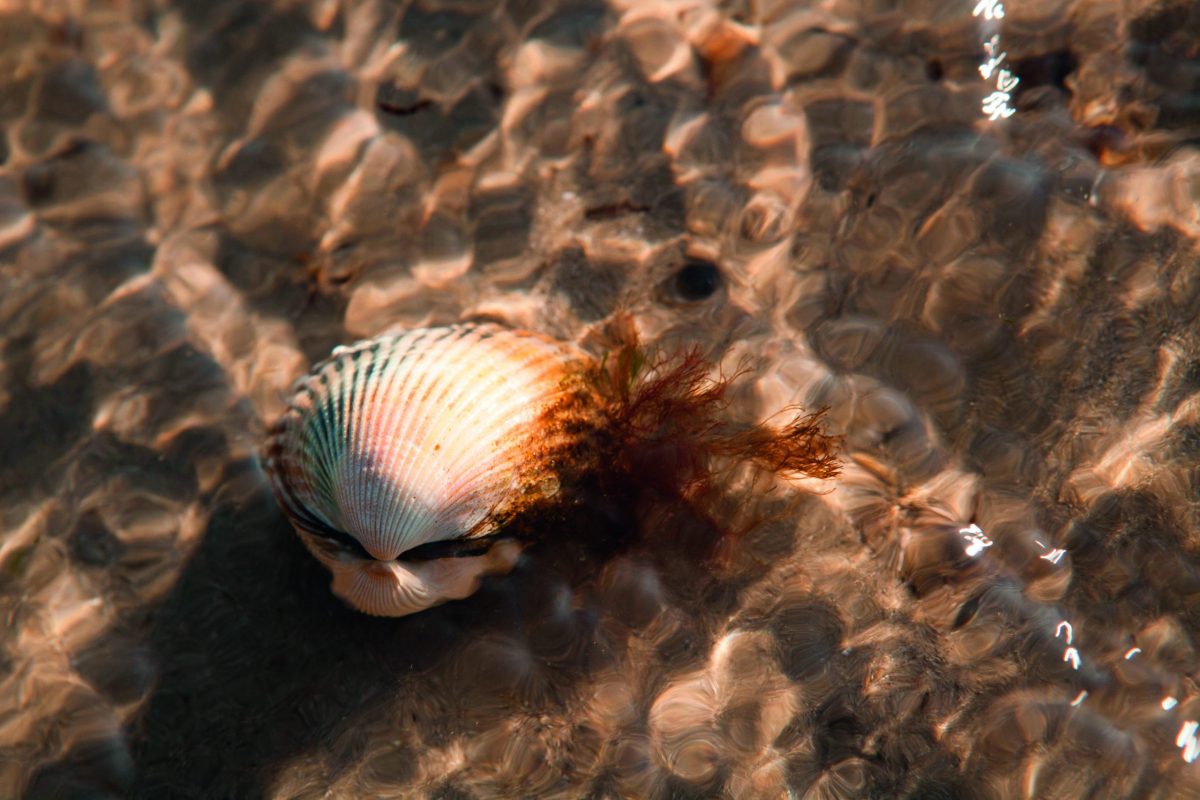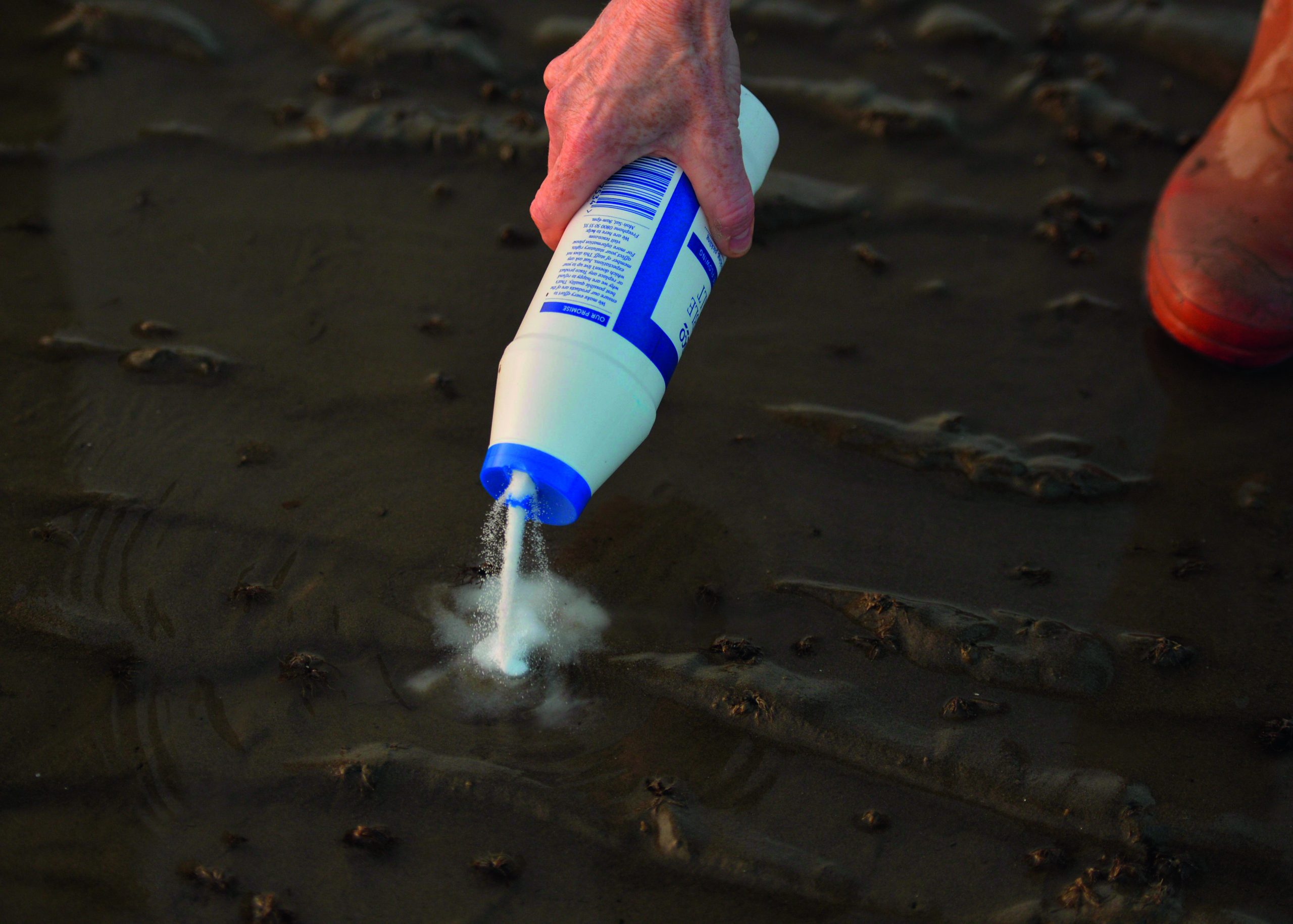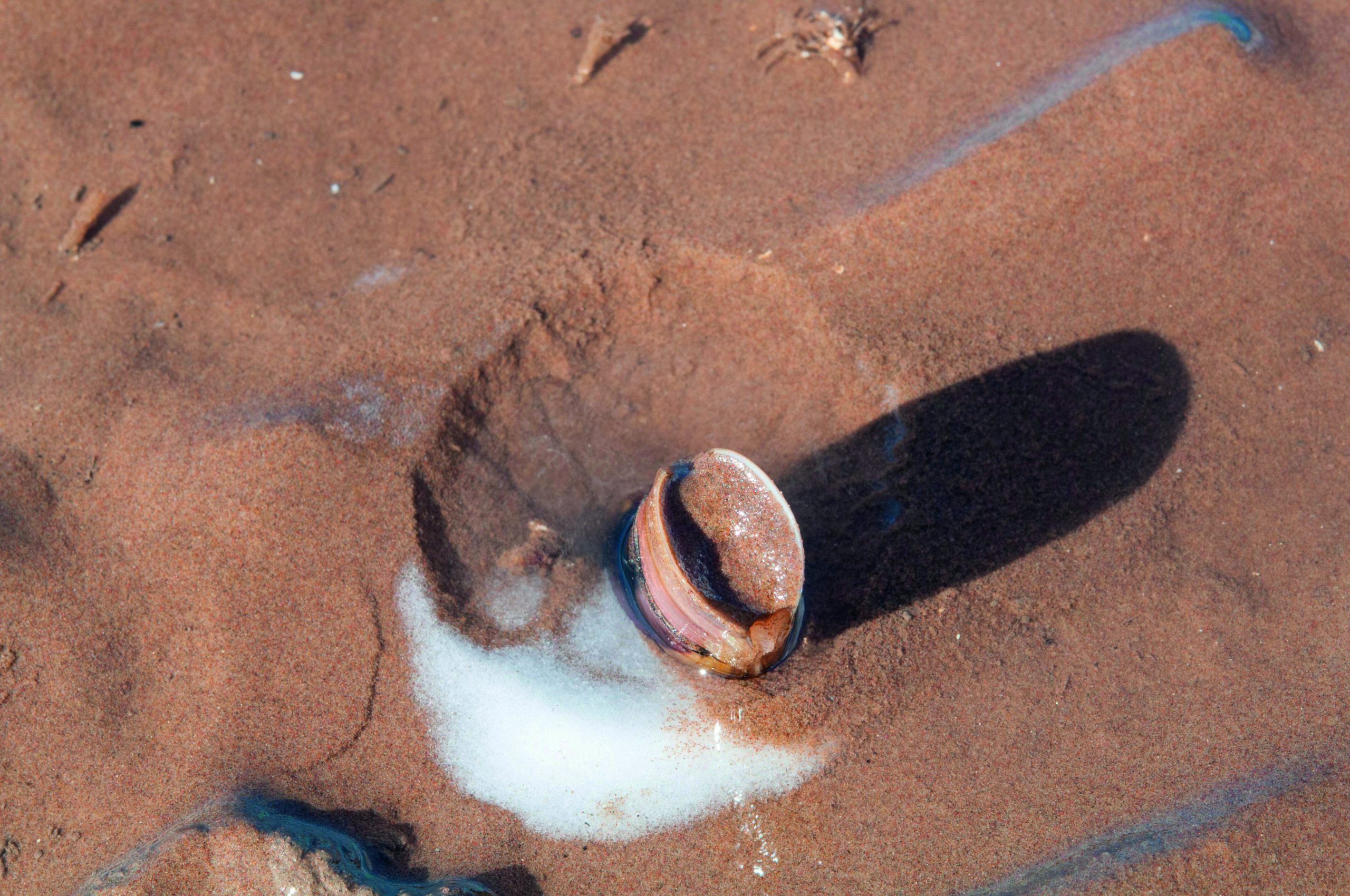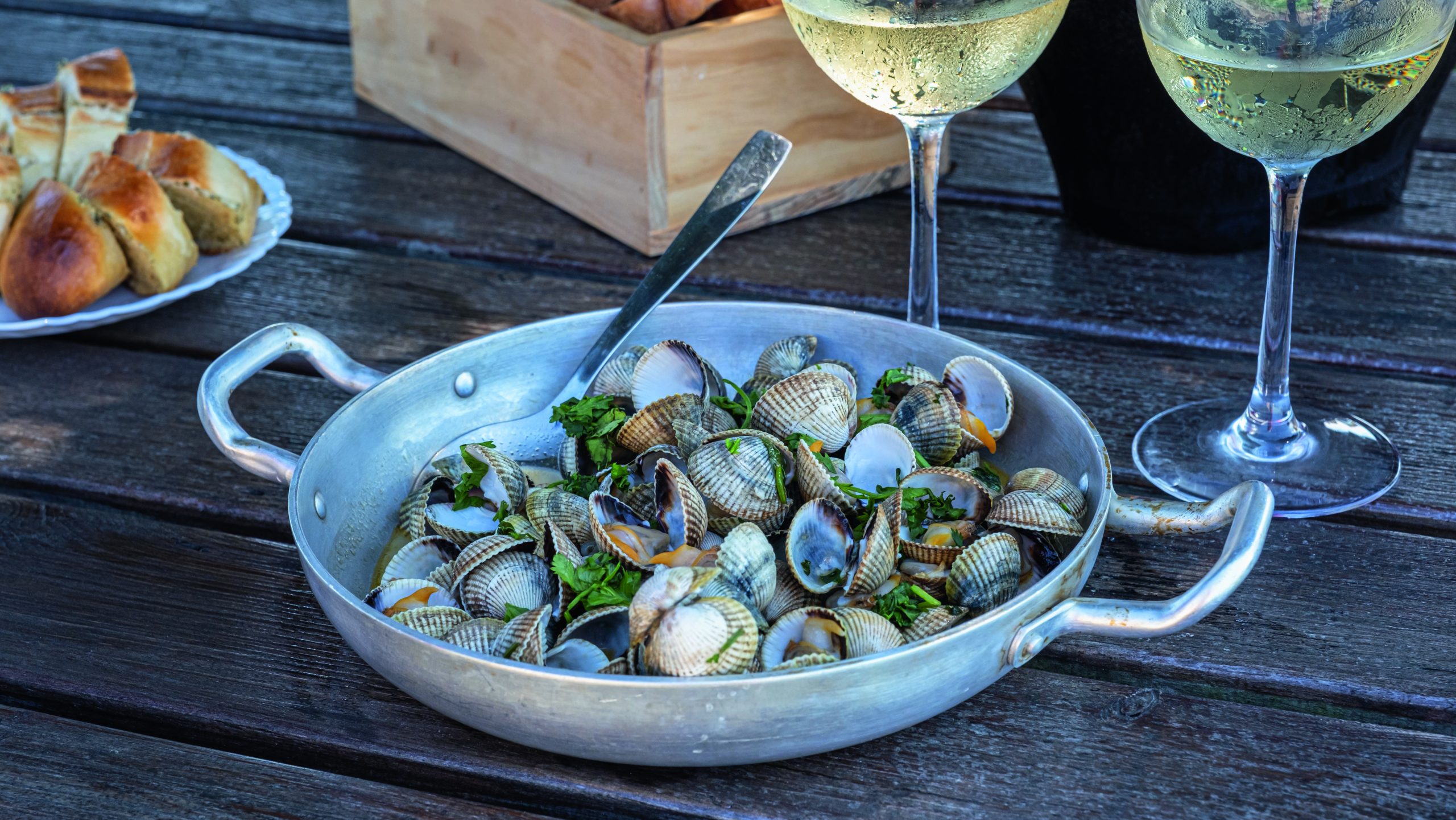News
Foraging for clams – hard work but worth the effort
Would you like to speak to our readers? We offer sponsored articles and advertising to put you in front of our audience. Find out more.
This, the last of three articles that deal with the edible creatures caught on the seashore, is about those bivalves that live in the sand and the mud — the clams. The part of the seabed that is accessible on foot, the intertidal zone, is a difficult place for creatures to live due to the trials of wave action, so the calmer waters of estuary and bay are where most clams will be found. Collect them on an ebb tide from an exposed seabed or, on a calm day, in up to 1ft of water. Check permissions and landing sizes with the local authorities.
With a life spent in hiding, clams are not always easy to find, but the distinctive marks they make in the sand or mud will often give away their precise location. These marks are caused by the sucking and squirting of the siphons by which they feed. Clams are generally oriented like clasped hands in prayer, the siphon
or siphons at the top.
The commonest clam — and certainly the best known — is the humble cockle. I first went cockling as a child living in Portsmouth. My father was the son of a Lowestoft herring skipper and had similarly learned the art of cockling in his youth. We found our cockles by randomly plunging our hands into the black and highly aromatic mud of Langstone Harbour to the east of Portsmouth.
Simple though it was, this strategy invariably resulted in a bucket full of cockles, all destined to spend a peaceful night cleaning themselves in bowls of salted water. My father’s method only works in mud or fine sand, so on coarser seabeds you must look closely for those markers.
Cockles live very near the surface and the tips of their shells are often visible, or can be spotted by a small and untidy single hole. A few simply lie on the seabed, though whether by choice or accident I have never discovered. These are easy prey for the collector, but do check the shells are not empty. Force a thumbnail between the two halves and a live clam will grip on to it tenaciously.
The traditional method is to use a rake, though I have had limited success with this. The rake inevitably destroys marine worms and other soft invertebrates that are trying to make a living in the same spot.
There are seemingly an endless number of clam species around our shores, but many are in deeper waters or otherwise too difficult to collect. I sometimes come across the white surf clam lying on, rather than in, the seabed, and on occasions have dug deep into mud to exhume a large sand gaper, Mya arenaria, or three.
The former is certainly good to eat, but I have never found enough for a meal. The latter, easy to find by its slightly oval, 5mm-diameter single siphon hole, requires a spade
as it can be a foot below the surface and the only edible part is a single, thick and muscular siphon of unfortunate appearance.
By far the most reliable and the best of all the clams in culinary terms are the palourdes. Several species go by this name, but I usually find the one known as the cross-cut carpet shell clam, Venerupis decussata. It is larger and altogether classier in appearance than the plebian but otherwise similar cockle. Being larger, its two siphons are about 1in apart, resulting in two distinct holes. Diving your hand into the sand in a scooping action around such markers will find both a clam and a commensurate frisson of delight.

Sprinkle about a teaspoon of salt on the razor clam’s siphon hole

The unfortunate clam finds the salt intolerable and will rise to the surface
Finding the clams I have mentioned so far is great fun, but for true excitement nothing beats the catching of razor clams. There are half-a-dozen species in British waters, the commonest being Ensis ensis, though most of my finds are Solen marginatus which, although smaller, have a fascinating trick — of which more later. Long and vertically oriented in the seabed, the two siphons of razor clams are close together, resulting in a distinct figure of eight or keyhole shape in the sand.
Selective
Having located a razor clam, the question is how to extricate it from its burrow. Commercially, razor clams are hydraulically dredged, but the more selective methods of the individual clam hunter are much gentler. Razor clams have the ability to move up and down by using the single, muscular and extendable ‘foot’ situated at their lower extremity.
Almost any disturbance will send them several inches down and beyond the reach of anything other than a spade, so do tread lightly. I have never tried it, but my friends
in Scotland swear by plunging a knife into the sand an inch or so alongside the siphon hole and at a slight angle, effectively preventing the clam retreating downwards. I am uncertain about what comes next, so I must leave it as an exercise for readers.
The technique I use is the famous ‘salt trick’. Sprinkle about a teaspoon of salt on the siphon hole and wait a moment. The clam evidently finds this serious chemical intrusion intolerable and, after a bit of squirting, will rise like Aphrodite from the waves. Grab the shell by the edges to avoid crushing your prize and quickly pull. Be prepared for any resistance from its foot, which might result in the poor creature being pulled in half. If it is resisting, wait a few seconds until it relaxes, then pull once again.
While Ensis species remain completely intact, Solen species deploy an amazing trick — they autotomise. The wrinkled double siphon of Solen will drop off when the clam exits its burrow, providing a tasty distraction to any predator.
If you are collecting in the shallows, it is worth dropping a razor clam back into the water. It will swim by flicking its foot then, once it has found a suitable location, use the foot to dig a new burrow.
I often think it is a pity to eat these extraordinary creatures.

Cooked simply with garlic and parsley, the humble cockle makes a delicious meal
Related articles
News
PETA attacks royal couple for breeding cocker pups
The Prince and Princess of Wales have faced criticism from animal rights group PETA after they had a litter of puppies
By Time Well Spent
News
Farmers launch legal review against Reeves’s farm tax
Chancellor Rachel Reeves faces a judicial review over inheritance tax reforms that could force family farms out of business
By Time Well Spent
Manage Consent
To provide the best experiences, we use technologies like cookies to store and/or access device information. Consenting to these technologies will allow us to process data such as browsing behavior or unique IDs on this site. Not consenting or withdrawing consent, may adversely affect certain features and functions.
Functional Always active
The technical storage or access is strictly necessary for the legitimate purpose of enabling the use of a specific service explicitly requested by the subscriber or user, or for the sole purpose of carrying out the transmission of a communication over an electronic communications network.
Preferences
The technical storage or access is necessary for the legitimate purpose of storing preferences that are not requested by the subscriber or user.
Statistics
The technical storage or access that is used exclusively for statistical purposes.
The technical storage or access that is used exclusively for anonymous statistical purposes. Without a subpoena, voluntary compliance on the part of your Internet Service Provider, or additional records from a third party, information stored or retrieved for this purpose alone cannot usually be used to identify you.
Marketing
The technical storage or access is required to create user profiles to send advertising, or to track the user on a website or across several websites for similar marketing purposes.





